Thoracic Disc Bulge
Updated:
(Also known as Thoracic Disc Herniation, Slipped Disc, Prolapsed Disc, Bulging Disc, Herniated Disc, Intervertebral Disc Injury, Sprained Disc)
What is a thoracic disc bulge?
The thoracic spine (i.e. the mid and upper back) comprises of many bones known as vertebrae, each of which is separated by a disc (figure 1). The disc comprises of many layers of strong connective tissue wrapping around the disc. In the middle of the disc lies a soft jelly-like substance which is capable of changing shape. When this jelly-like substance protrudes from the disc due to a tear in several layers of the connective tissue, this is known as a thoracic disc bulge (figure 1).
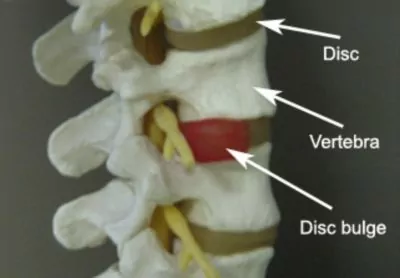
To understand the mechanism of a thoracic disc bulge, it is useful to liken the disc to a vanilla slice. Imagine a vanilla slice wrapped in five layers of sandwich wrap. The top and bottom layers of pastry represent the vertebra (bones), the custard represents the jelly-like substance of the disc and the sandwich wrap represents the connective tissue around the disc. If you were now to pinch the front of that vanilla slice, you could imagine, the custard would squeeze towards the back of the vanilla slice and may tear two or three layers of sandwich wrap at the back of the vanilla slice. As a result the custard is no longer supported as effectively at the back of the vanilla slice and therefore bulges out at this location. In the disc, the situation is the same. Bending forward closes down the front of the disc, pushing the jelly-like substance within the disc towards the back. Overtime or suddenly, this may tear several layers of connective tissue at the back of the disc resulting in a disc bulge.
Causes of a thoracic disc bulge
There are several activities in everyday life which typically cause thoracic disc bulges provided they are forceful, repetitive or prolonged enough. These include: bending forward, slouching, activities using your arms in front of the body (e.g. washing dishes, driving etc.) and lifting (especially in combination with twisting).
Occasionally, thoracic disc bulges may occur following a trivial movement involving bending forward such as picking up a small object or sneezing. In these instances, the disc has normally been subject to repetitive or prolonged bending, slouching or lifting forces leading up to the incident.
Signs and symptoms of a thoracic disc bulge
Patients with a thoracic disc bulge may experience a sudden onset of back pain during the causative activity, however, it is also common for patients to experience pain and stiffness after the provocative activity, particularly the next morning.
Symptoms are typically felt in the mid back, sometimes between or around the shoulder blades and may be located centrally, on one side or on both sides of the spine. The patient may experience pain radiating around the ribs and into the chest, or sometimes down the arms. Muscle spasm, pins and needles, numbness or weakness may also be present.
In some cases, patients may appear to stand with their spine noticeably out of alignment as a result of the disc bulge. Symptoms are generally exacerbated with activities involving rotation, side bending, activities using your arms in front of your body, lifting, bending forwards, or prolonged sitting (especially if slouched). Breathing, coughing, and sneezing may also aggravate symptoms.
Patients with a thoracic disc bulge often experience pain that is worse first thing in the morning.
Diagnosis of a thoracic disc bulge
A thorough subjective and objective examination from a physiotherapist is usually sufficient to diagnose a thoracic disc bulge. Investigations such as an MRI or CT scan may be required to confirm diagnosis.
Treatment for a thoracic disc bulge

Members Only ContentBecome a PhysioAdvisor Member to gain full access to this exclusive content. For more details see Become a Member. Already a member? Login Now
Prognosis of a thoracic disc bulge
In patients with the perfect balance of activities, the thoracic disc may be pushed into position in as little as three days. Typically, however, patients take approximately 2 to 3 weeks to push their disc back ‘in’. Once the disc is ‘in’, the patient should be pain free and have full movement. However, the torn connective tissue at the back of the disc only begins to heal from this point. It takes approximately six weeks of consistently keeping the disc ‘in’ to allow the torn tissue to heal to approximately 80% of its original strength.
Contributing factors to the development of a thoracic disc bulge
Several factors may contribute to the development of a thoracic disc bulge. These need to be assessed and corrected with direction from the treating physiotherapist and may include:
- poor core stability
- a sedentary lifestyle
- being overweight
- muscle tightness
- muscle weakness
- joint stiffness
- poor lifting technique
- poor posture
- a lifestyle involving large amounts of sitting, bending or lifting.
Physiotherapy for a thoracic disc bulge
Physiotherapy treatment for this condition is vital to hasten the healing process and ensure an optimal outcome and may comprise:
- soft tissue massage
- electrotherapy (e.g. ultrasound)
- postural taping
- postural bracing
- mobilization
- traction
- the use of a lumbar support for sitting
- dry needling
- exercises to push the disc back ‘in’ and to improve strength, core stability and flexibility
- education
- activity modification advice
- biomechanical correction
- ergonomic advice
- clinical Pilates
- hydrotherapy
- a gradual return to activity program
Other intervention for a thoracic disc bulge
Despite appropriate physiotherapy management, a small percentage of thoracic disc bulges fail to improve and may require other intervention. This may include further investigations such as an X-ray, CT scan or MRI, pharmaceutical intervention, assessment from a specialist or sometimes surgery. The treating physiotherapist can advise if this is required and will refer to the appropriate medical authority if it is warranted clinically. In cases of persisting or worsening neurological symptoms (pins and needles, numbness and weakness), surgery may be indicated. When a loss of bowel or bladder control is present due to the disc bulge, this is considered a medical emergency and immediate surgical intervention is usually required.
Exercises for a thoracic disc bulge
The following exercises are commonly prescribed to patients with this condition. You should discuss the suitability of these exercises with your physiotherapist prior to beginning them. Generally, they should be performed provided they do not cause or increase symptoms.
Your physiotherapist can advise when it is appropriate to begin the ‘Initial Exercises’ and eventually progress to the ‘Intermediate’, ‘Advanced’ and ‘Other’ exercises. As a general rule, addition of exercises or progression to more advanced exercises should take place provided there is no increase in symptoms.
Initial Exercises
Shoulder Blade Squeezes
Begin sitting or standing tall with your back straight. Squeeze your shoulder blades together as hard and as far as possible pain free (figure 3). Hold for 5 seconds and repeat 10 times provided there is no increase in symptoms. Repeat 4 – 5 times daily. (N.B In some cases it may be beneficial to perform this exercise every 1 or 2 hours provided the exercise does not cause or increase symptoms).
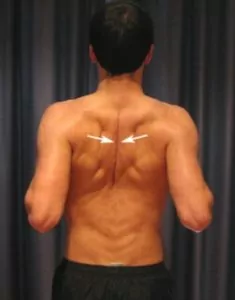
Chin Tucks
Begin sitting or standing tall with your back and neck straight, shoulders should be back slightly. Tuck your chin in as far as you can go without pain and provided you feel no more than a mild to moderate stretch (figure 4). Keep your eyes and nose facing forwards. Hold for 2 seconds and perform 10 repetitions provided the exercise does not cause or increase symptoms. Repeat 4 – 5 times daily. (N.B In some cases it may be beneficial to perform this exercise every 1 or 2 hours provided the exercise does not cause or increase symptoms).
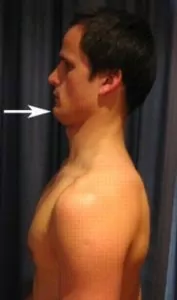
Intermediate Exercises

Members Only ContentBecome a PhysioAdvisor Member to gain full access to this exclusive content. For more details see Become a Member. Already a member? Login Now
Advanced Exercises

Members Only ContentBecome a PhysioAdvisor Member to gain full access to this exclusive content. For more details see Become a Member. Already a member? Login Now
Other Exercises

Members Only ContentBecome a PhysioAdvisor Member to gain full access to this exclusive content. For more details see Become a Member. Already a member? Login Now
Rehabilitation Protocol for a thoracic disc bulge

Members Only ContentBecome a PhysioAdvisor Member to gain full access to this exclusive content. For more details see Become a Member. Already a member? Login Now
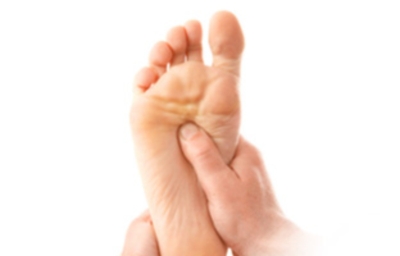 Find a Physio
Find a Physio
Find a Physiotherapist in your local area who can treat a bulging thoracic disc.
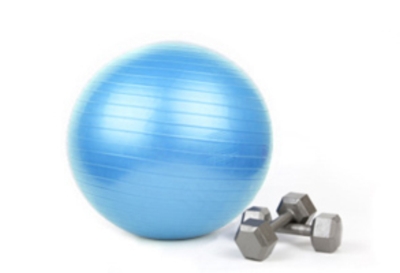 Physiotherapy products for a thoracic disc bulge
Physiotherapy products for a thoracic disc bulge
Some of the most commonly recommended products by physiotherapists to hasten healing and speed recovery in patients with this condition include:
-
 Wheat Bags
Wheat Bags -
 OPPO – Posture Aid / Clavicle Brace (OPP2075)
OPPO – Posture Aid / Clavicle Brace (OPP2075) -
 AllCare Band
AllCare Band -
 Fitness Ball Pro – Loumet
Fitness Ball Pro – Loumet -
 Premium Strapping Tape 38mm (Victor)
Premium Strapping Tape 38mm (Victor) -
 AllCare Pro-TENS Machine
AllCare Pro-TENS Machine -
 AllCare Tubing
AllCare Tubing -
 AllCare Spikey Massage Ball
AllCare Spikey Massage Ball -
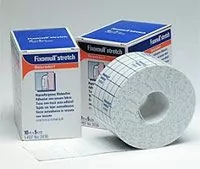 Fixomull Stretch 5cm x 10m
Fixomull Stretch 5cm x 10m -
 AllCare Instant Cold Pack (15 x 25cm)
AllCare Instant Cold Pack (15 x 25cm) -
 AllCare Foam Roller Round
AllCare Foam Roller Round -
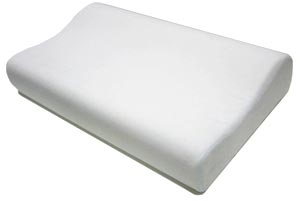 Dentons Impressions Classic Memory Foam Therapeutic Pillow
Dentons Impressions Classic Memory Foam Therapeutic Pillow -
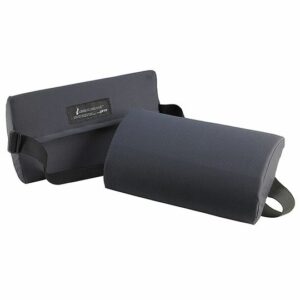 Lumbar Rolls (‘D’ Shaped)
Lumbar Rolls (‘D’ Shaped)
To purchase physiotherapy products for this condition click on one of the above links or visit the PhysioAdvisor Shop.
 More exercises
More exercises
- Upper Back Stretches.
- Upper Back Strengthening Exercises.
- Postural Exercises.
- Basic Pilates Exercises to assist with posture.
- Upper Body Massage Ball Exercises.
 More Information
More Information
- Postural Taping.
- Ergonomic Computer Setup.
- Posture.
- Ice or Heat.
- R.I.C.E. Regime.
- Return to Running Program.
- Understanding Pain
- Why is my injury not improving?
- Upper Back & Chest Diagnosis Guide.
Become a PhysioAdvisor Member

Link to this Page
If you would like to link to this article on your website, simply copy the code below and add it to your page:
<a href="https://physioadvisor.com.au/injuries/upper-back-chest/thoracic-disc-bulge”>Thoracic Disc Bulge – PhysioAdvisor.com</a><br/>PhysioAdvisor offers expert physiotherapy information on a thoracic disc bulge including: symptoms, causes, diagnosis, treatment, exercises, physiotherapy products and more...
Return to the top of Thoracic Disc Bulge.

